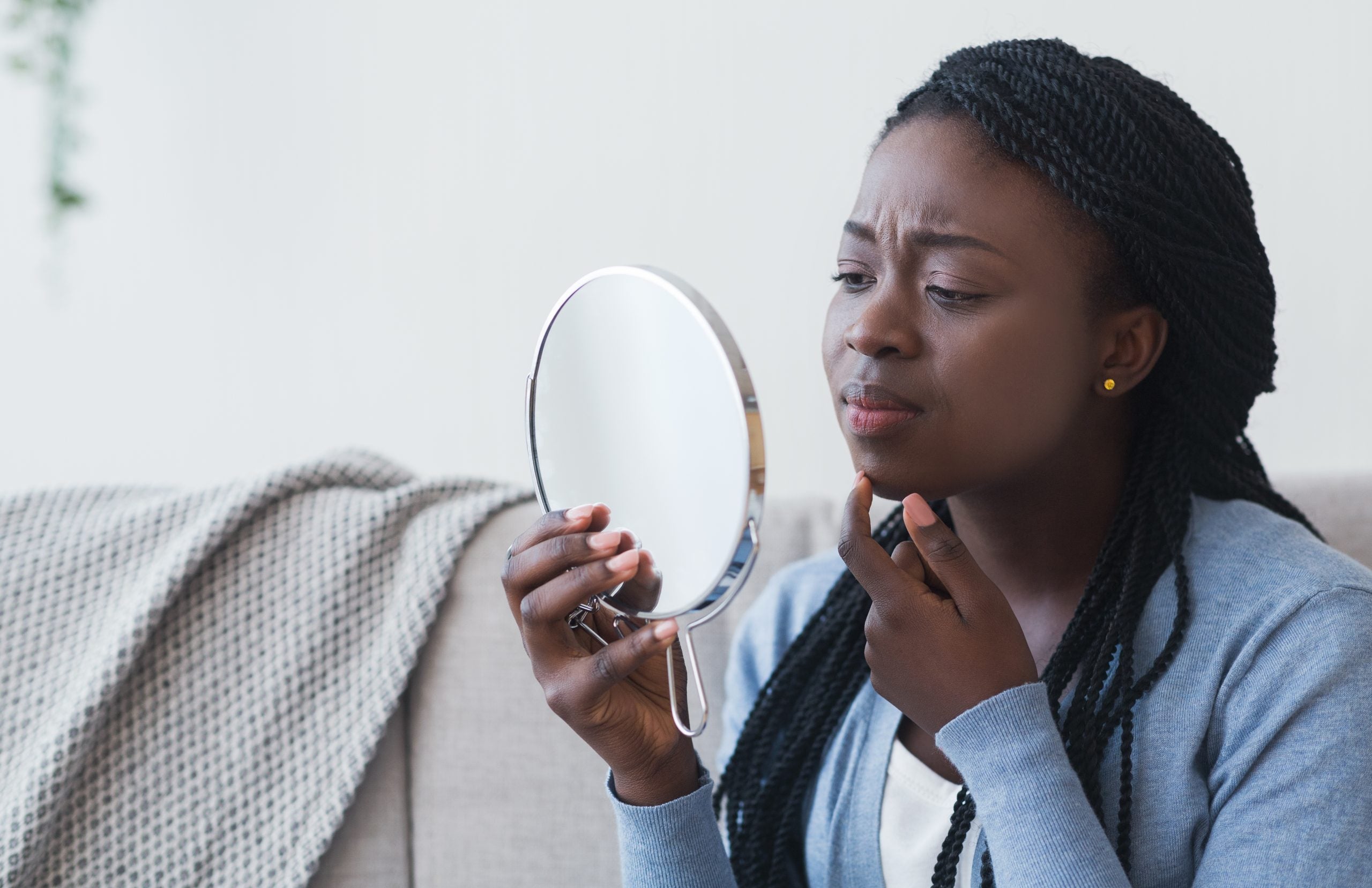
Picture this. You’re getting ready for a major Zoom meeting. You’ve done your hair and picked out the best outfit. You’ve been keeping an eye on your work presentation binder all week so you can whip it out when you need it. Everything seems perfect—until you notice the small breakouts forming in different areas across your face.
When you’re faced with acne, it’s important to resist the urge to cover it with makeup. You also have to force yourself to avoid picking at it. The best you can do is get into a skincare routine (if you don’t already have one), use the acne’s location to get an idea of the root cause, and treat zits accordingly.
We made an acne analysis based on an ancient technique called Mien Shiang and included a few solutions as well. Check it out below.
Forehead Acne
If you’re breaking out along your hairline, there’s a pretty serious chance that your hair products are the reason why. If you’re using a lot of oil or moisturizers, make sure that you’re keeping your hair out of your face. Or, you can switch to non comedogenic products, which are products that don’t block your pores.
When your hair isn’t the culprit, your diet may be. If you’re not getting enough water and your diet is made up of processed foods exclusively, then your forehead may breakout as a result. As always, hydration helps.
Stress can also cause forehead pimples. If you’re constantly in overdrive, it’s imperative that you come up with ways to help yourself unwind. Activities like writing, reading, exercise, and hanging out with friends help melt stress away.
Chin Acne

Impending periods may lead to chin acne. This means that they are more closely linked to hormones than bad habits. This type of acne can also be present along your jawline. Up to 85% of people will have heightened acne right before their period.
A product with salicylic acid will help zits dry up, as acne in this area are also connected to oiliness.
Cheek Acne
Do you clean your phone screen on a consistent basis? If not, you’re putting grime and bacteria on your face every time you answer a phone call. Also, your face’s oil glands are prompted to create more oil when your phone is pressed against your face. This is the the underlying cause of a lot of people’s breakouts on their cheeks.